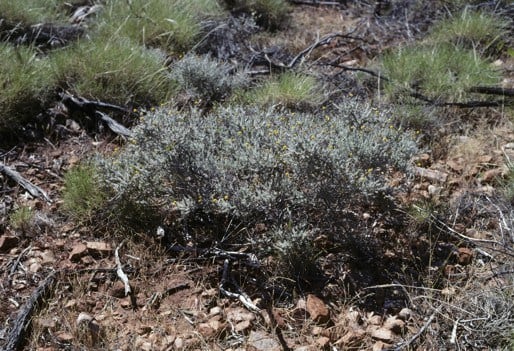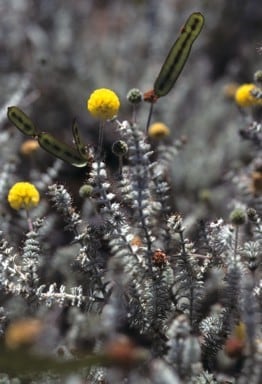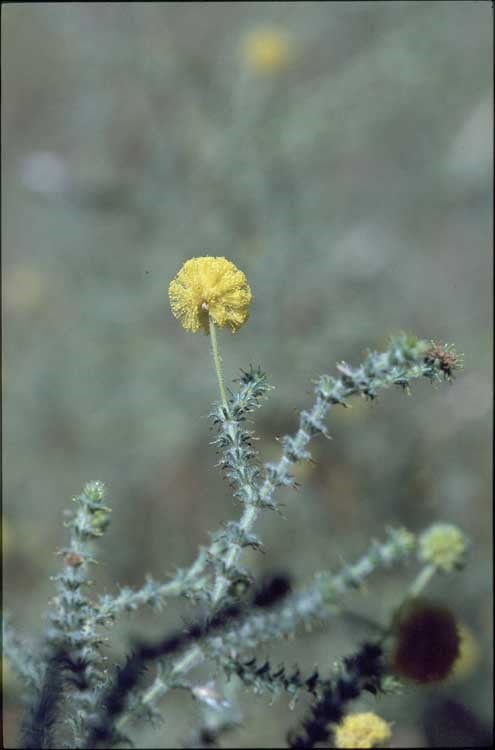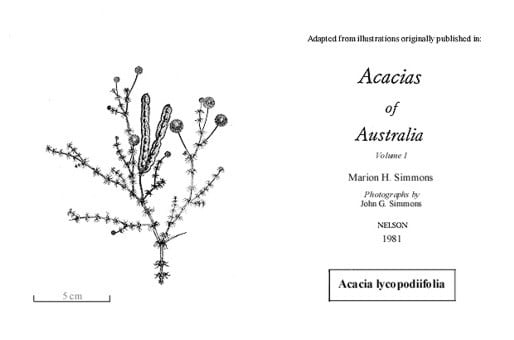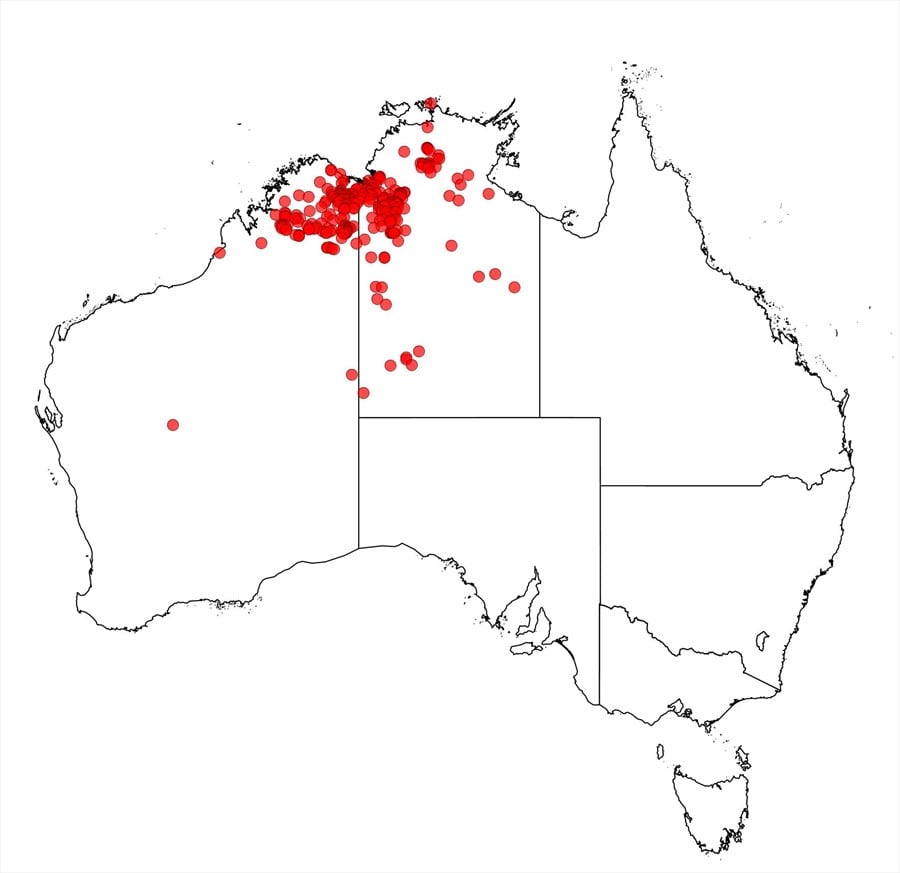Acacia lycopodiifolia A.Cunn. ex Hook.
WATTLE
Acacias of Australia
Family
Fabaceae
Distribution
Found in the southern and eastern Kimberley region, W.A., and adjacent part of the N.T.
Description
Spreading shrub to 1 m high. Branchlets velvety, pubescent or pilose with ±erect white hairs. Stipules 0.6–1.2 mm long. Phyllodes in whorls of (8–) 10–14, spreading to erect, straight or recurved, slightly flattened, 1.5–4 (–5) mm long, with setaceous curved mucro (0.3–) 0.5–1.5 mm long, velvety to pilose, sometimes viscid, with an obscure impressed adaxial nerve. Peduncles 10–24 mm long, pilose. Heads 30–40-flowered. Flowers 5- or 6-merous; calyx 0.5–0.9 mm long, ribbed; calyx lobes linear or sometimes narrowly triangular, thick, slightly incurved, glabrous or sparsely hairy, or occasionally fringed with hairs; corolla lobes striate, hispid. Pods sessile, sometimes constricted between seeds, to 55 mm long, 4–6 mm wide, glabrous or occasionally pubescent; margins slightly thickened. Seeds longitudinal, 4–6 mm long; pleurogram open.
Habitat
Occurs in shallow rocky sandstone soil on hills..
Specimens
W.A.: 45 km NE of Springvale Stn, Apr. 1955, M.Lazarides 5068 (BRI, CANB, DNA, MEL, NSW, PERTH); 6 km NE of Wyndham Pumping Stn, J.R.Maconochie 131 (BRI, DNA); Inglis Gap, King Leopold Ra., H.Streimann 8248 (CANB, DNA, PERTH). N.T.: 64 km SE of Timber Creek Police Stn, R.A.Perry & M.Lazarides 2875 (BRI, CANB, DNA, MEL, NSW, PERTH); Katherine Gorge, 32 km NE of Katherine, L.G.Adams 897 (CANB, DNA, MEL, NSW).
Notes
A highly variable species, characterised by longitudinal seeds, short phyllodes with a comparatively long mucro and white hairs, but variable in phyllode and mucro length, indumentum, and form of the calyx. Commonly has pubescent to pilose phyllodes 2–3 mm long with a mucro 1–2 mm long. Several collections from the N.T. (e.g. Jasper Gorge, 3 July 1974, J.H.Willis, MEL, PERTH) have phyllodes 3–4 mm long and show an approach to A. anasilla. One from near L. Argyle has phyllodes 5–7 mm long with a mucro 0.5–1 mm long. Another from Mt Hart Stn has phyllodes 6–9 mm long which are glabrous or almost so. The specimen with yellow indumentum from Bedford Downs Stn (C.H.Gittins 1419, BRI n.v.) that was referred to by A.S.George, Fl. Australia 11B: 393 (2001), is most probably A. claviseta. Specimens from Katherine Gorge and Edith and UDP Falls (e.g. J.D.Briggs 929, MEL) have a sparser indumentum and shorter mucro than other material and are tentatively referred to this species. Perhaps not far removed from A. prolata.
FOA Reference
Data derived from Flora of Australia Volumes 11A (2001), 11B (2001) and 12 (1998), products of ABRS, ©Commonwealth of Australia
Author
A.S.George
Minor edits by J.Reid
This identification key and fact sheets are available as a mobile application:
URL: https://apps.lucidcentral.org/wattle/
© Copyright 2018. All rights reserved.
